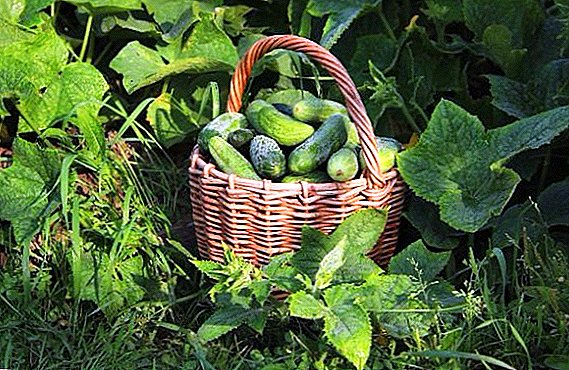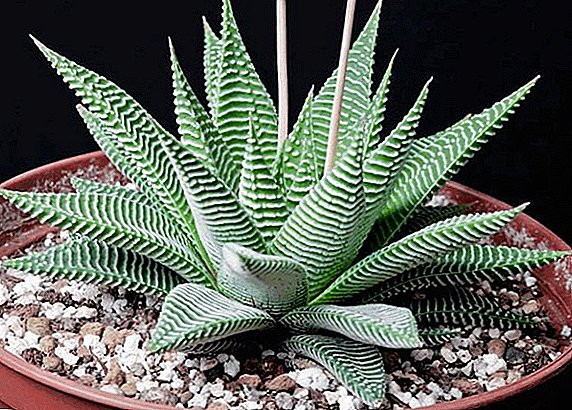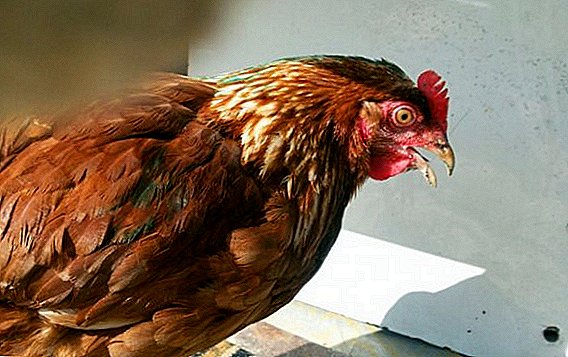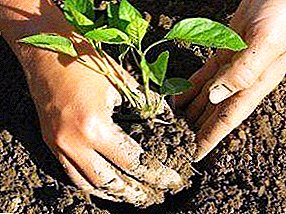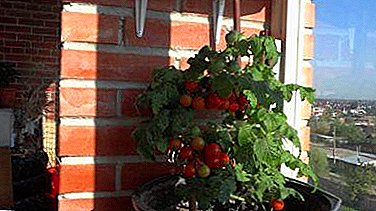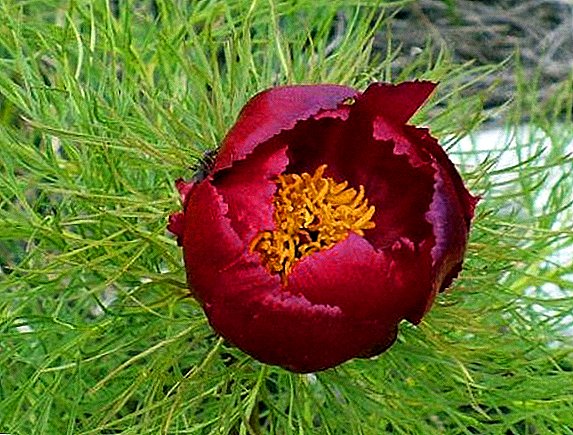 Peonies are a genus of perennial shrubs found in the tropical and temperate zones of the Eurasian continent and North America. The genus includes about 36 species, among which there are listed in the Red Book. These include mountain peony. About this flower and tell you next.
Peonies are a genus of perennial shrubs found in the tropical and temperate zones of the Eurasian continent and North America. The genus includes about 36 species, among which there are listed in the Red Book. These include mountain peony. About this flower and tell you next.
Description
The bush grows up to 30-50 cm in height. Its stems are straight, solitary, slightly ribbed. Have a slight purple hue on the ribs. The lower part of the stem is covered with scales with a red-purple hue.
Did you know? The name of the pions came from the name of the physician Pean (from the legends) who treated the gods and people wounded in battles.
The trifoliate leaflets, slightly rounded, 18-28 cm long, dark green in color with red-purple veins. The flower is lonely located at the top of the stem, in diameter - 6-12 cm. It has five to six petals of white and cream, sometimes pink. The edge of the petals is wavy. Blossoms in May, the fruits ripen in August.
Inside the fruit are dark blue seeds (4-8 pcs.).  It prefers to grow in cedar-oak, cedar-broad-leaved, maple forests by single bushes or small groups.
It prefers to grow in cedar-oak, cedar-broad-leaved, maple forests by single bushes or small groups.
Spread
Mountain peony is a very rare plant. It is found exclusively in the Far Eastern region (in forests):
- Khasansky district;
- Nadezhdensky district;
- Ussuri region;
- Shkotovsky district;
- Guerrilla district;
- Lazovsky district;
- Khabarovsk region;
- Sakhalin;
- Iturup;
- Shikotan;
- Japan;
- China.
We advise you to get acquainted with the different types and varieties of peonies, with the nuances of care, as well as learn how to grow a tree and accelerated peony.
Causes of flower conservation
In the Red Book, the mountain peony is listed as a vulnerable species, i.e. a species that can become endangered at any moment. The reasons for this condition are as follows:
- The flower is very beautiful, so many people want to add it to the bouquet compositions.. And very often, tearing a peony for these purposes, they do it soullessly, without leaving the plant the opportunity to recover.
- Many believe that the mountain peony - good medicinetherefore, they actively harvest raw materials.
- Amateur gardeners hunt for a beautiful flower. They dream to get a rare plant on their site and dig it together with the root. But the bush rarely takes root in the new place.
- Mountain Peony - Forest Plant. Intensive deforestation leads to the habitat habitual for the flower.
- Destroys habitat and forest fires, arising, as a rule, because of the negligence of people.

Also, medicinal and evading peony are popular for their medicinal properties.
Cultivation: is it possible?
Usually mountain peony outside the natural habitat grows in botanical gardens. In his home garden, his survival rate is below average. It can be tried to grow in a vegetative (transplant with division) way either from seeds:
- Seeds are harvested immature and are sown in boxes of sand or sawdust in the first decade of August.. First, the boxes should be in a warm place with a temperature of 18-25 degrees. After two or three months, they should be moved to a cold place with a temperature of 4-7 degrees and kept there for 1.5-2 months. Such drops imitate natural conditions, and it is easier for seeds to germinate.
- During vegetative propagation it is necessary to separate part of the bush with the root and buds.. This procedure is preferably carried out in late August. To root rooted and easier wintered, it is necessary to soak for a day in a 0.015% solution "Heteroauxin". Leaf stalk is cut with axillary bud from the middle part of the shoot. The disc is shortened by 2/3. If you need a cutting with a bud, then it is broken out.
 Seeds of a mountain peony The sapling goes deep into the ground by 2-3 centimeters. Between cuttings should be 3-4 centimeters.
Seeds of a mountain peony The sapling goes deep into the ground by 2-3 centimeters. Between cuttings should be 3-4 centimeters.Important! The soil should consist of a mixture of peat and sand in equal proportions.
Care
Starting from the second half of May, young plants should be watered every month with fertilizers of the type “Sturdy” and “Ideal”. Fortified bushes are sprayed three times per season with urea (50 g / 10 l). In order for the soil to remain nutritious, you need to periodically feed.
At the end of March - beginning of April, they are fed with nitrogen-potassium fertilizers (15-20 g / square meter). In the period of bud formation, mullein is introduced (1:10). After it, in 15-20 days, potash-phosphorus fertilizers of 15 g are added.
Watering should be rare, but abundant. An adult bush needs two to three buckets of water to completely wet the soil layer in which the roots are located.
The plant needs most in moisture at the time of bud formation, flowering and the formation of new flower buds. After watering and rain, the ground must be loosened.  Formative pruning along with sanitary is carried out in the spring, until the buds open. Cut the dry, damaged stems. Dead shoots in winter are removed with bud break.
Formative pruning along with sanitary is carried out in the spring, until the buds open. Cut the dry, damaged stems. Dead shoots in winter are removed with bud break.
Important! In order to achieve lush peony blossoms, in the first two years, the buds on the bush must be cut off completely. So the plant will not spend power on flowering, and will begin to take root.
In the autumn should also be sanitary pruning.
Cut dry buds, diseased stems. Pruning should be done very carefully, because the plant does not like this procedure.
Mountain peonies are cold-resistant plants. They'll easily carry the snowy winter without shelter. But if severe frosts and little snow are expected, then it is better to build a tent-hut out of a spruce and sacking above the bush. In order to shelter the hut normally, the shoots must be tied up.  It is necessary to remove warming in the spring when frosts are not expected any more.
It is necessary to remove warming in the spring when frosts are not expected any more.
We recommend that you familiarize yourself with the rules for trimming peonies after flowering, as well as with the features of preparing peonies for winter.
Diseases and pests
Mountain peony is resistant to pests and diseases. But if the plant grows in cramped and excessively high humidity, then a raid appears on it. It can also be formed when the soil is saturated with nitrogen.
If the deposit is slimy, then the plant was struck by gray mold. You can fight it only by cutting and burning the affected parts of the bush. For prevention, the flower is watered with an infusion of garlic or copper sulphate (50 g / 10 l).
If the plaque is white and dusty, it is powdery mildew. She, too, is destroyed with the help of copper sulfate.  In a bucket of water, 20 g of vitriol and 200 g of soap are diluted. Such a mixture is sprayed with a bush regularly in two or three days, until the disease recedes.
In a bucket of water, 20 g of vitriol and 200 g of soap are diluted. Such a mixture is sprayed with a bush regularly in two or three days, until the disease recedes.
Did you know? The first interested in peonies, as ornamental plants, the Chinese in the era of the Qin and Han dynasties. It was more than two thousand years ago.
Mountain peony is a rare and special plant. Although the flower is unpretentious, it is extremely difficult to grow it at home, the probability that it will take root is low.


